George Seifert
- David Hegler

- Jan 21, 2021
- 7 min read
Updated: Sep 10, 2023

George Seifert lived and breathed the San Francisco 49ers. Born and raised in the City by the Bay, he grew up watching those great teams of the 1950s and idolized many of the great players who played just across the street from his high school. Eventually, he would grow up to help the team win all five of their Super Bowls and coach some of the greatest players of all time while they were in their prime. This is his story.
Early Years
George Gerald Seifert was born on January 22, 1940 in San Francisco, California. As a student at Polytechnical High School, he worked as an usher at 49ers games at Kezar Stadium. While he spent most of his time watching the games rather than working, a dream was formed during those Sunday afternoons.
After playing as a guard and linebacker at Utah, he served as a graduate assistant for the Utes in 1964. He had his first head coaching stint the following year at Westminster College where he went 3-3. After serving as a graduate assistant with Iowa in 1966, Seifert entered the defensive side of the ball the following year with Oregon where he would stay until 1971 as the program’s defensive backfield coach.
He held the same position at Stanford from 1972 to 1974 and was the head coach at Cornel from 1975 to 1976. His dismal 3-15 record in two years got him fired and he came back to Stanford where Bill Walsh was the head coach. Seifert served as the defensive backs coach from 1977 to 1979 before being hired by Walsh in 1980 who was then the 49ers head coach. George Seifert was coming home.
At Last, a 49er
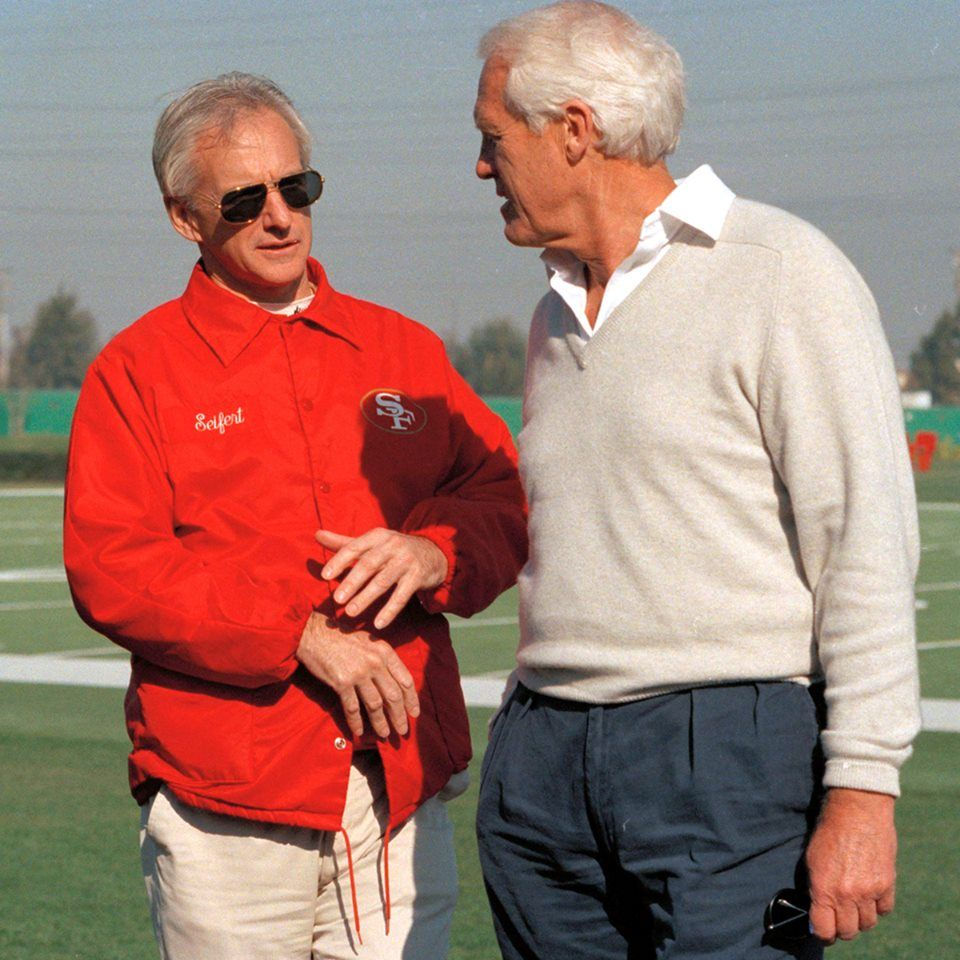
When George Seifert arrived in San Francisco, the 49ers were coming off back-to-back 2-14 seasons and had the worst defense in the NFL. They got some key pieces for their defense that year, including linebacker Keena Turner. Led by a young Joe Montana, the 49ers improved to 6-10 in 1980 but their defense was still a significant concern.
Addressing their needs in the 1981 draft, the 49ers selected three defensive backs: Ronnie Lott, Eric Wright and Carlton Williamson. As the defensive backs coach, Seifert was tasked with getting them prepared for their first NFL season. All through training camp he would have his defensive backs running around town, following his car. He tutored them in the intricacies of the 49ers' defense and by the time the season began, they were ready to make an immediate impact.
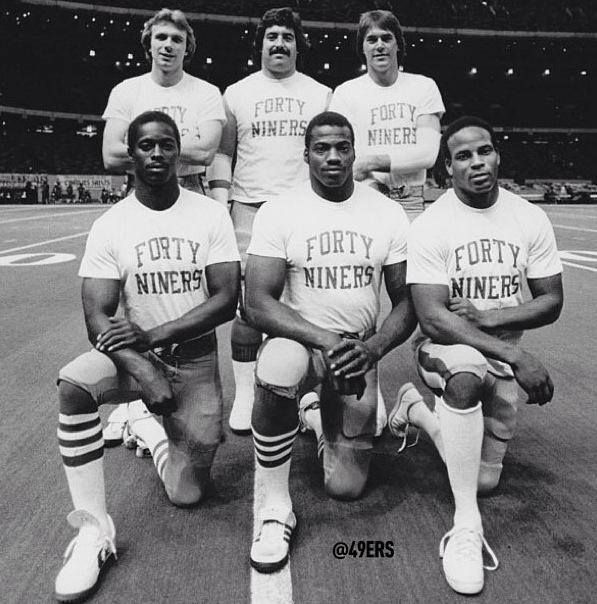
Seifert’s group led a terrific defense in 1981, but things really took off when the team signed defensive end Fred Dean. Blessed with the pressure he put on quarterbacks, Lott, Wright, Williamson and Dwight Hicks were free to intercept passes and make life a nightmare for opposing receivers. Dubbed “Dwight Hicks and the Hot Licks”, they put fear in quarterbacks and receivers throughout the league.
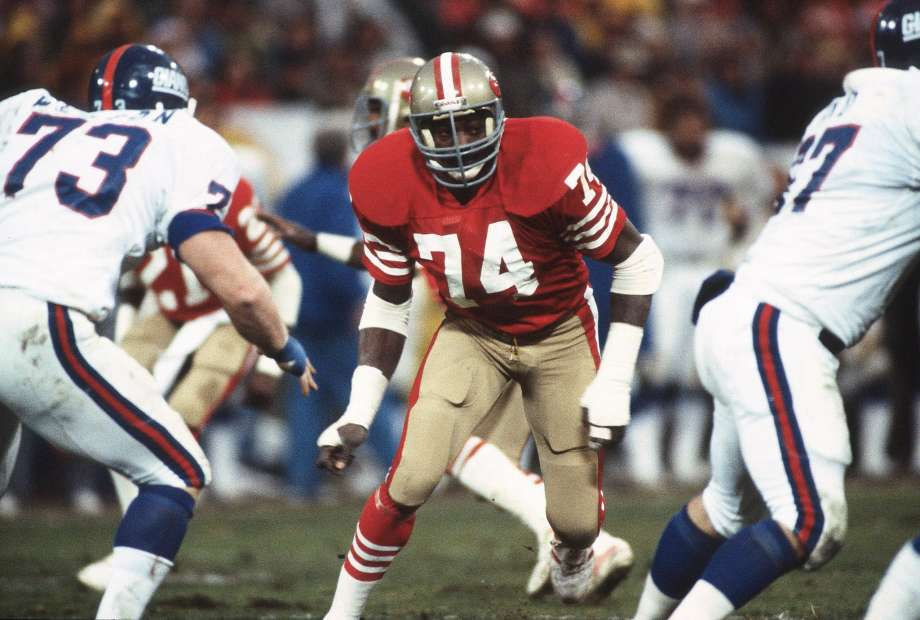
The 49ers went 13-3 and reached the NFC Championship Game in 1981 where they faced off against the Dallas Cowboys. Hampered by two pass interference penalties against Ronnie Lott, the 49ers almost lost the game but were saved by “the Catch”.
However, the Cowboys had one last chance to snatch victory from their hosts. Eric Wright had other plans and tackled Cowboys receiver Drew Pearson before he could get Dallas in field goal range. At long last, the 49ers were going to the Super Bowl where the Cincinnati Bengals were waiting.
The Bengals were Walsh’s former team and their quarterback, Ken Anderson, was developed by him. Armed with the knowledge that Walsh brought to the table, the 49ers defensive backs were ready, intercepting Anderson twice. What turned the game around was a legendary goal line stand. After stopping the Bengals four straight times at the goal line, there was no doubt that the 49ers would win the Super Bowl. They won their first world championship 26-21.
Despite their good fortune in 1981, the 49ers defense was off kilter throughout 1982 and at the end of the year their defensive coordinator, Chuck Studley, was fired. George Seifert was hired as his replacement and from then on the 49ers always featured a stout defense. While they didn’t win the Super Bowl in 1983, they did reach the title game in 1984 after posting a league best 15-1 record.
Their defense was terrific that year, ranking seventh in rushing yards allowed and first in points allowed. They made the Super Bowl and played against the high-scoring Miami Dolphins. The 49ers defense wreaked havoc on the Dolphin’s quarterback, Dan Marino, sacking him four times and intercepting him twice. As a result of their dominance, the 49ers won 38-16.
In the three years since their victory against the Dolphins, the 49ers defense ranked either second or third in points allowed. Along the way, they added pieces including defensive ends Charles Haley and Danny Stubbs and linebacker Bill Romanowski. Ronnie Lott switched from cornerback to safety during those years and immediately made All-Pro. Seifert’s unit was coming together for its greatest stretch.
The 49ers won the Super Bowl in 1988 and once again, Seifert’s unit was a major contributor. They held a high scoring Bengals team to just 16 points and Joe Montana tossed the game winning touchdown with just seconds left. Shortly after the game, Bill Walsh retired and George Seifert was hired to take his place.
His Own Team
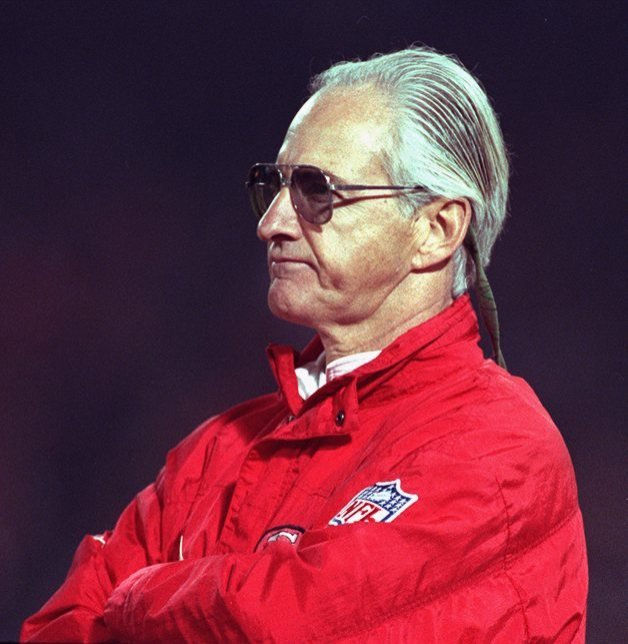
Since George Seifert arrived in San Francisco, he had never once stepped on the team logo in the middle of the field. While he didn’t become a head coach until 1989, the players noticed this quirk much more predominantly than when he had been a defensive coordinator. He had waited his whole life for this dream opportunity and he did not want to disappoint.
When he became a head coach, the 49ers were entering their greatest era. It was a time when Joe Montana would cement his legacy as an all-time great quarterback by not only leading the team to consecutive Super Bowl victories but also winning two straight NFL MVPs. Throughout Seifert’s first few years as their head coach, it was subtlety acknowledged that it was not truly “his” team.
Bill Walsh had built that great team, not Seifert. The 49ers even contributed to the atmosphere by giving Walsh a Super Bowl ring after the 49ers won it the year after he retired. When the 49ers beat the Denver Broncos in the Super Bowl that year, they neglected to give him a ride on their shoulders, a common practice for a champion head coach.
Sure, George was respected by many and loved by his players for his various quirks (including blowing on breath mints three times before popping them in his mouth and needing a lucky sweater before the Super Bowl in his rookie year as a head coach), but he did not yet deserve the recognition as a great team builder.
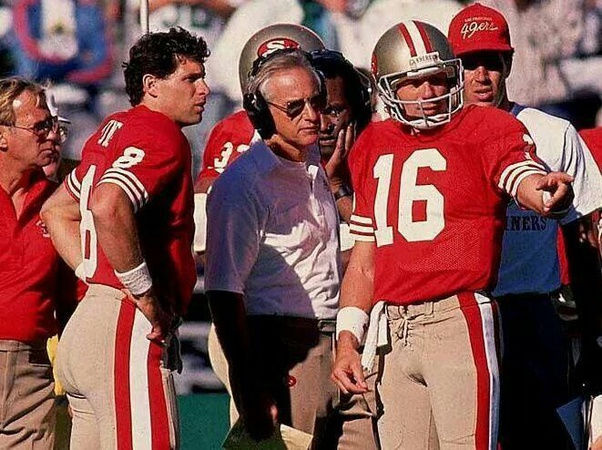
It was only after the team traded Joe Montana to Kansas City that the 49ers finally became George Seifert’s team. Bill Walsh had been there throughout Montana’s development but he had only been with the organization for Montana’s successor’s first two years. When Steve Young stepped in to officially take Montana’s role as the franchise quarterback, both he and Seifert would forever be linked to their gut-wrenching struggle to finally win a Super Bowl of their own.

The 1992 and 1993 seasons were Steve Young’s first great years as a full-time starter in the NFL. He won the NFL MVP in 1992 and with Montana sitting on the bench, led the team to the NFC Championship where they would lose to the Cowboys 30-20.
Montana whome-fieldas traded soon after and the 49ers would fight to an 11-5 finish in 1993 but again lost to Dallas in the NFC Championship. George Seifert and the 49ers management knew that changes needed to be made in order for them to win their fifth Super Bowl.
The 49ers signed a slew of players in the offseason, players who could make an impact. Ranging from the Pro Bowl to the Hall of Fame, this group included Ed McCaffrey, Charles Mann, Richard Dent, Rickey Jackson, Ken Norton Jr., Gary Plummer and Deion Sanders. Motivated by the failures of the past, the 49ers stormed through the season and again claimed home-field advantage in the playoffs. Standing in their way were the Dallas Cowboys in the NFC Championship Game.
The 49ers didn’t let them breathe and quickly took a 21-point lead. They kept up the determination and the momentum throughout the game and hardly allowed the Cowboys to come close to a comeback. The 49ers won the game 38-28 and two weeks later when they hoisted the Lombardi Trophy for the fifth time, it was almost anti-climactic. The Cowboys were the real villain and they knew that they would win the Super Bowl if they could just get past their arch-nemesis. At long last, Steve Young was vindicated and George Seifert had finally brought a championship to his hometown that he could call his own. The only downside to winning the Super Bowl for Seifert was that, once again, his team neglected to give him a ride on their shoulders.
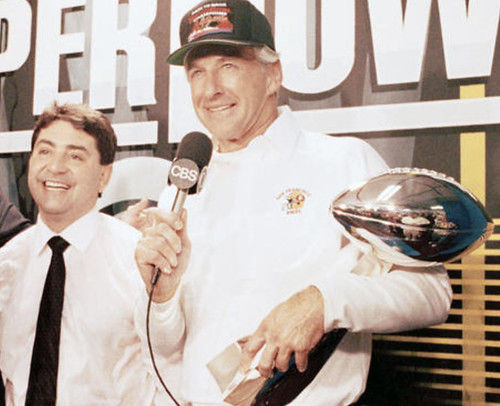
The 49ers struggled to even get back to the NFC Championship Game the next two years and after the 1996 season, George Seifert and the 49ers decided to mutually part ways. He would spend the next two years mulling a potential comeback and by 1999 the Carolina Panthers hired him as their head coach and de facto general manager. Seifert’s mettle as a head coach would soon be tested.
The Last Chapter

The Panthers had the talent to compete in 1999. Quarterback Steve Beuerlein threw for 4,436 yards and 36 touchdowns and made the Pro Bowl. Receiver Mushin Muhammad and tight end Wesley Walls each made the Pro Bowl as well and outside linebacker Kevin Greene recorded 12 sacks in his final year as a player. The defense was suspect all season, giving up 381 points and ultimately the team fell to 8-8 and out of the playoffs. To make matters worse, in November of that year, receiver Rae Carruth was accused (and ultimately found guilty) of conspiring to murder his pregnant girlfriend. This whole episode was a public relations nightmare for the Panthers and marred Seifert's time in North Carolina.
The Panthers were not as good in 2000. Beuerlein barely tossed as many touchdowns as interceptions and they didn’t have a single Pro Bowler. As a result, the Panthers succumbed to a 7-9 finish and out of the playoffs. The 2001 Panthers were the worst team in franchise history, going 1-15. Remarkably, they still had a Pro Bowl player in Wesley Walls who caught five touchdowns. However, with a season as pathetic as that, changes needed to be made and George Seifert was fired. He finished his career with 176 wins and 114 losses.
While he is not on the Pro Football Hall of Fame, he is in the 49ers Hall of Fame. When the 49ers held a reunion for all of their Super Bowl teams in 2006, the players gave Seifert a long overdue ride on their shoulders. His 98 wins in San Francisco are still the most in franchise history, but most importantly, he contributed to all five of their Super Bowls. The kid from San Francisco had grown up and brought his city and his team two Lombardi Trophies. He had indeed lived his greatest dream.

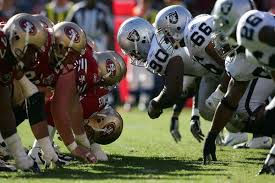

Comments